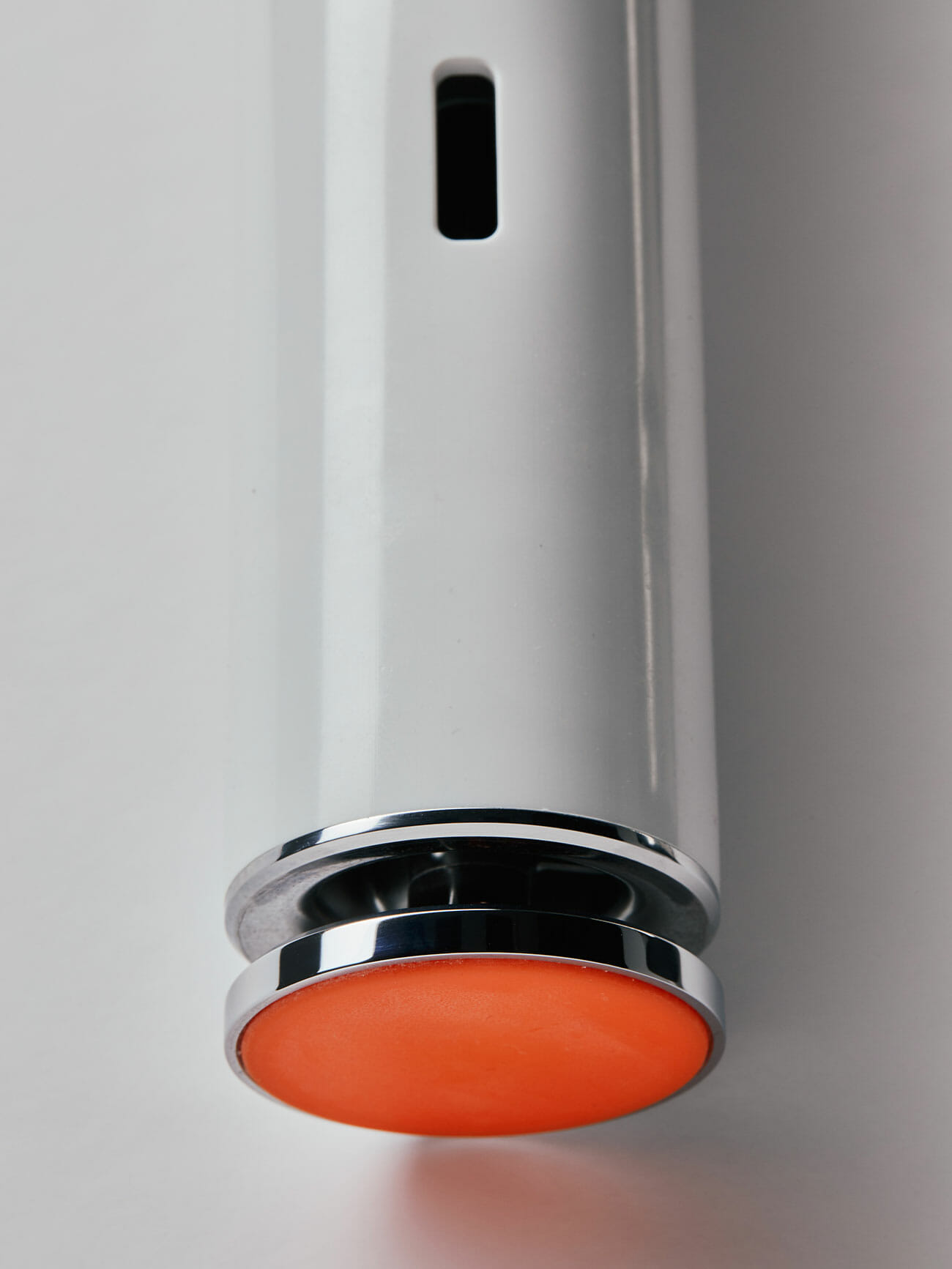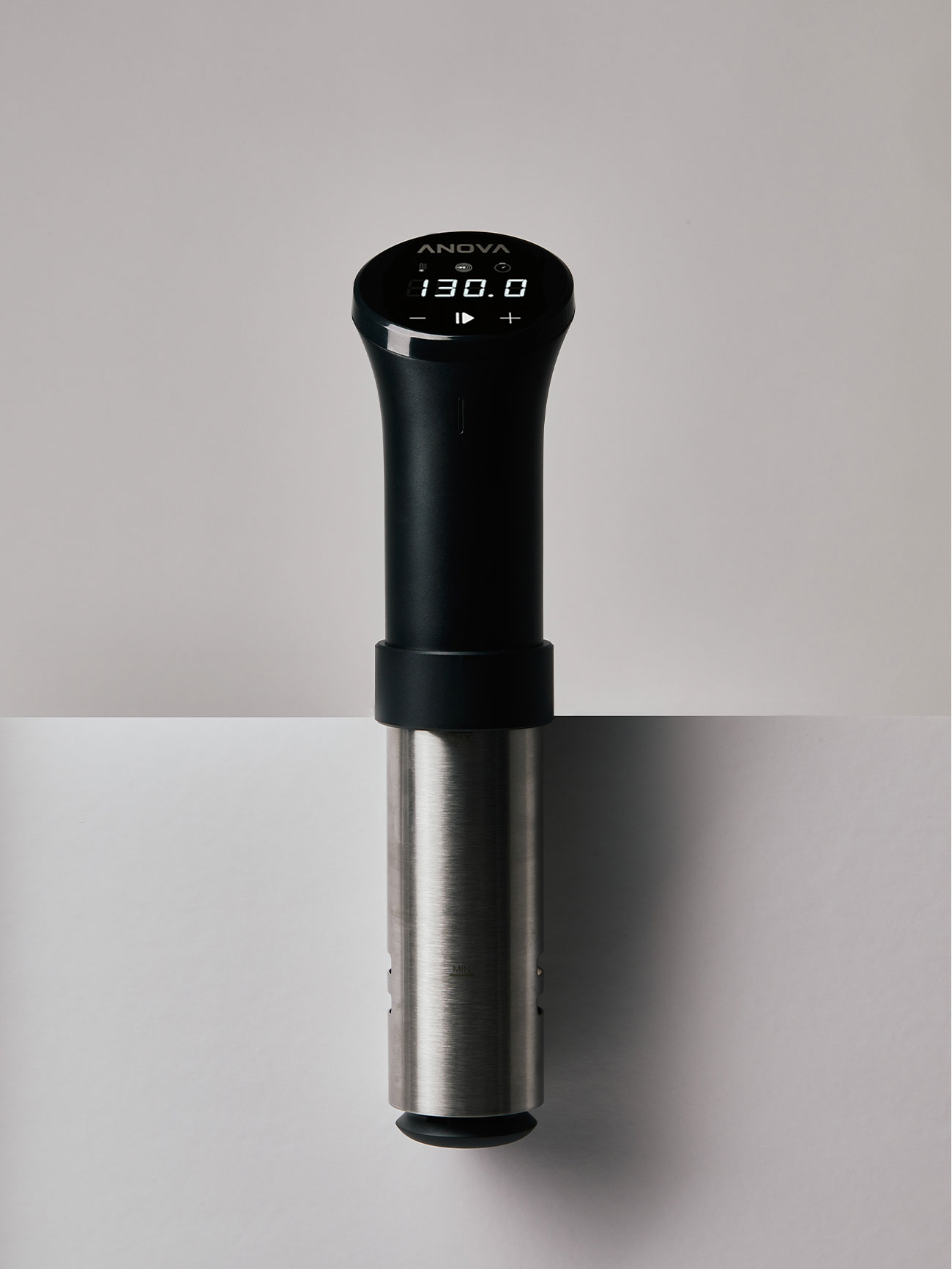So you’ve overcooked a fancy grass-fed steak. You’ve heard that by cooking food sous vide — that is, inside a plastic bag submerged in a precisely regulated water bath — your beef, fish, pork, or what have you comes out at the ideal temperature each and every time, without fail.
But which circulator to choose? Currently, the two kings of sous vide cookery are Anova’s Precision Cooker and Breville’s Joule. Read on to explore how these devices stack up across four key categories: design, apps, performance, and setup.
|

Overall Design
The principal design difference between these two machines is that the Anova features a built-in display and controls, while the Joule — which users operate entirely through a companion app — sports just a single button. Without onboard controls and the innards that come with them, the Joule is considerably lighter, smaller, and sleeker than the competition.
Another major difference lies in the way these two circulators attach to pots and other cooking vessels. The Anova utilizes a height-adjustable clamp, while the Joule offers three options for securing the device — a standard clip that fits most thin-walled pots, a larger clamp for coolers and the like and a strong magnetic base that makes setup ridiculously straightforward, provided you’re using a pot made of metal.

Apps
Both devices offer apps that allow users to control water temperature and other settings wirelessly. The Joule app — visually impressive, exceptionally intuitive, and ultra-helpful in the kitchen — is hands-down the superior of the two. It features over 100 step-by-step guided recipes complete with meat doneness recommendations that show users how their food will turn out when cooked to different temperatures. Another handy feature — the app asks users to input their meat’s thickness and whether it’s fresh or frozen, and adjusts cook time accordingly.
While the Anova app also offers up recipes and some guidance regarding doneness, it’s not nearly as robust or helpful as the Joule app. More than once, I found myself consulting the Joule app even when cooking with the Anova.
Performance
In short, both of these devices are capable of heating water — lots of it, at that — to high temperatures relatively quickly. But since we’re comparing the two, it’s only fair we get a bit granular.
The Joule packs 1,100 watts of heating power, so it brings water to temperature slightly faster than the 1,000-watt Anova. It also reaches a peak water temperature of 208 degrees, a bit hotter than the Anova’s 197-degree max. Considering that sous vide recipes typically involve cooking food low and slow, neither of those facts should impact your decision much.

Setup
Setting up the Anova is as simple as placing it in a pot filled with water, plugging it in, and tapping its onboard buttons to set your desired water temperature and cook time. As mentioned, you can also toggle settings by downloading Anova’s app and connecting to your circulator via WiFi.
On the other hand, since the Joule can only be controlled through its app, you need to pair a Bluetooth-enabled device to start cooking. I’ll admit that, at first, the prospect of relying solely on an app and a wireless connection was disconcerting. To my surprise, it only took a minute to connect my iPhone to the Joule, and every time I’ve used the device since, it has paired automatically without a hitch. Once everything’s synced up, you can use the Joule app to manually set the temperature or select a recipe from its extensive database.

Verdict
Throughout testing, the Joule stood out as the more intuitive and user-friendly circulator of the two, largely due to its immensely useful, recipe-loaded app. That’s why I’d recommend the Joule over the Anova, especially for cooks new to the world of sous vide. But if you don’t mind researching recipes on your own — or if you prefer manual controls to app-based interfaces — you absolutely can’t go wrong with the Anova either.
Both gadgets retail for $200 (and go on sale regularly), a small price to pay for perfectly cooked food nearly every time. To truly get your money’s worth, remember that sous vide cooking is great for a boatload of dishes aside from a classic steak. Believe it or not, one of the tastiest meals I made during testing was this carrot recipe, courtesy of sous vide master J. Kenji López-Alt.
|

